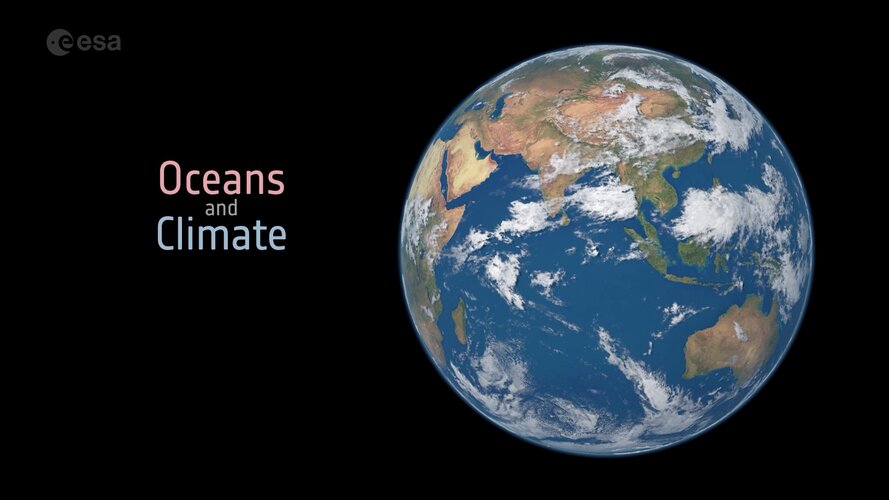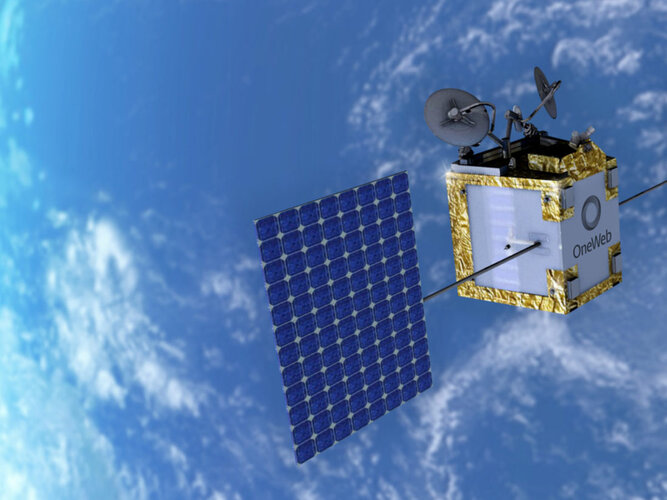
Copernical Team
GHGSat doubles capacity to monitor methane emissions with three new ABB-built optical sensors
 Canadian company GHGSat, which specializes in high-resolution GHG monitoring from space, launches three new ABB-built optical sensors into space aboard a SpaceX Falcon 9 rocket from Cape Canaveral Space Force Station, doubling capacity to monitor methane gas emissions.
With ABB's technology, the GHGSat team is able to precisely locate and measure methane emissions from any given industrial
Canadian company GHGSat, which specializes in high-resolution GHG monitoring from space, launches three new ABB-built optical sensors into space aboard a SpaceX Falcon 9 rocket from Cape Canaveral Space Force Station, doubling capacity to monitor methane gas emissions.
With ABB's technology, the GHGSat team is able to precisely locate and measure methane emissions from any given industrial OneWeb, Astroscale, ESA and UK partner to launch space junk servicer ELSA-M
 OneWeb together with Astroscale will seek to safeguard the satellite economy with ground-breaking new spacecraft technology, thanks in part to a new investment of 14.8 million euro. The mission to demonstrate Astroscale's ELSA-M servicer will launch towards the end of 2024, with ambitious plans to deliver a debris removal service to satellite operators thereafter.
The announcement builds u
OneWeb together with Astroscale will seek to safeguard the satellite economy with ground-breaking new spacecraft technology, thanks in part to a new investment of 14.8 million euro. The mission to demonstrate Astroscale's ELSA-M servicer will launch towards the end of 2024, with ambitious plans to deliver a debris removal service to satellite operators thereafter.
The announcement builds u Oceans and climate
 Video:
00:03:33
Video:
00:03:33
Earth’s oceans are huge heat stores, soaking up 93% of the excess heat from human activity over the past 70 years. Ocean currents redistribute heat around the planet, from the Equator to the poles. Where this ocean heat goes influences weather patterns and regional climate. As well as absorbing heat, oceans are a natural carbon sink, absorbing a quarter of carbon dioxide emissions from human activity. This has led to the acidification of ocean water, threating marine life.
The amount of heat and carbon dioxide absorbed depends on a number of ocean variables, all of which can
Sustainable connectivity in space

The world’s first mission to remove several small telecommunications satellites from orbit once they reach the end of their operational service is about to start building and testing its prototype spacecraft.
Why haven't we discovered co-orbital exoplanets? Could tides offer a possible answer?
 In our solar system, there are several thousand examples of co-orbital objects: bodies that share the same orbit around the Sun or a planet. The Trojan asteroids are such an example. We have not yet observed any similar co-orbitals in extrasolar systems, despite discovering more than 5,000 exoplanets.
In a new study published in Icarus by Anthony Dobrovolskis, SETI Institute and Jack Lissa
In our solar system, there are several thousand examples of co-orbital objects: bodies that share the same orbit around the Sun or a planet. The Trojan asteroids are such an example. We have not yet observed any similar co-orbitals in extrasolar systems, despite discovering more than 5,000 exoplanets.
In a new study published in Icarus by Anthony Dobrovolskis, SETI Institute and Jack Lissa Blast a Knob: Sols 3485-3486
 The Sol 3483 drive completed as planned, positioning the rover near several outcrops of knobby material and more "normal" looking bedrock. The tactical uplink team discussed various options and decided to focus this plan's observations on the knobby material. Unfortunately, timing constraints precluded an APXS integration today, as the instrument temperature would be too high to provide high-qua
The Sol 3483 drive completed as planned, positioning the rover near several outcrops of knobby material and more "normal" looking bedrock. The tactical uplink team discussed various options and decided to focus this plan's observations on the knobby material. Unfortunately, timing constraints precluded an APXS integration today, as the instrument temperature would be too high to provide high-qua Debris from Chinese rocket reenters atmosphere, mostly burning up
 Debris from the last stage of the Long March-7 Y5 carrier rocket reentered the atmosphere at 5:34 p.m. on Wednesday (Beijing Time), the China Manned Space Agency said.
The vast majority of the device burned up during reentry and the debris fell into the sea, with the center of the landing area at a latitude of 37.5 degrees north and a longitude of 24.2 degrees east, according to an agency
Debris from the last stage of the Long March-7 Y5 carrier rocket reentered the atmosphere at 5:34 p.m. on Wednesday (Beijing Time), the China Manned Space Agency said.
The vast majority of the device burned up during reentry and the debris fell into the sea, with the center of the landing area at a latitude of 37.5 degrees north and a longitude of 24.2 degrees east, according to an agency Terran Orbital deploys 6 satellites from SpaceX Transporter-5 mission for multiple customers
 Terran Orbital Corporation (NYSE: LLAP) reports all six Terran Orbital designed and built satellites that launched on the SpaceX Falcon 9 rocket as part of the Transporter-5 mission have successfully deployed on their journey to Low Earth Orbit (LEO).
The Terran Orbital satellites include two NASA CubeSat Proximity Operations Demonstration (CPOD) vehicles,
Terran Orbital Corporation (NYSE: LLAP) reports all six Terran Orbital designed and built satellites that launched on the SpaceX Falcon 9 rocket as part of the Transporter-5 mission have successfully deployed on their journey to Low Earth Orbit (LEO).
The Terran Orbital satellites include two NASA CubeSat Proximity Operations Demonstration (CPOD) vehicles, Sidus Space selects L3Harris Mission Critical Operations Center Software for LizzieSat constellation
 Sidus Space, Inc. (NASDAQ:SIDU), a Space-as-a-Service satellite company focused on commercial satellite design, manufacture, launch, and data collection, is pleased to announce its selection of L3Harris Technologies (NYSE:LHX) InControl and OnTime software for command and control and mission planning for LizzieSat Constellation
InControl will provide satellite command and control software
Sidus Space, Inc. (NASDAQ:SIDU), a Space-as-a-Service satellite company focused on commercial satellite design, manufacture, launch, and data collection, is pleased to announce its selection of L3Harris Technologies (NYSE:LHX) InControl and OnTime software for command and control and mission planning for LizzieSat Constellation
InControl will provide satellite command and control software Satellogic launches 4 Satellites on SpaceX Transporter-5 Mission
 Satellogic Inc. (NASDAQ: SATL), a leader in sub-meter resolution Earth Observation data collection, reports the launch of four additional satellites from Cape Canaveral Space Force Station.
They were delivered to a sun-synchronous low-Earth orbit on SpaceX's Transporter-5 mission on May 25, 2022 onboard the Falcon 9 reusable, two-stage rocket, under SpaceX's Rideshare program. All four sat
Satellogic Inc. (NASDAQ: SATL), a leader in sub-meter resolution Earth Observation data collection, reports the launch of four additional satellites from Cape Canaveral Space Force Station.
They were delivered to a sun-synchronous low-Earth orbit on SpaceX's Transporter-5 mission on May 25, 2022 onboard the Falcon 9 reusable, two-stage rocket, under SpaceX's Rideshare program. All four sat 
